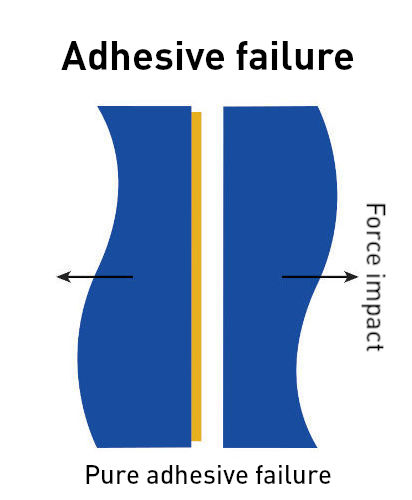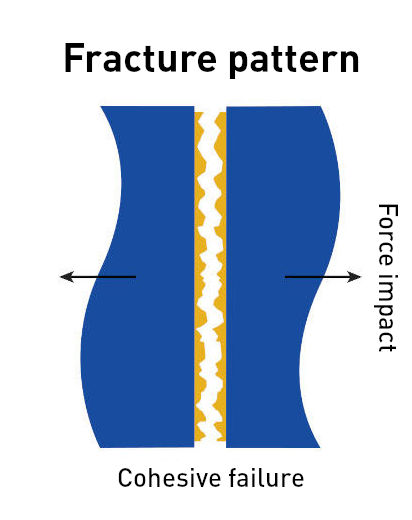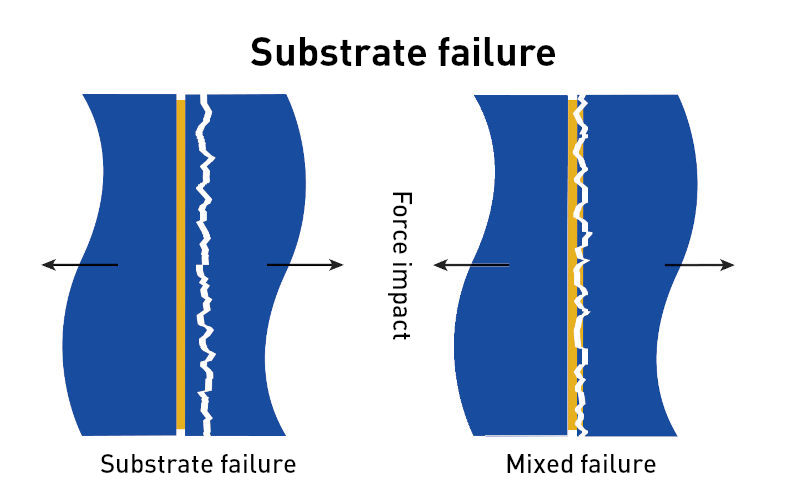Fracture patterns when bonding: What they say about the connection

In the world of hot-melt adhesives, fracture patterns are an important indicator of the quality and durability of a bond. They provide information about how and why a bond failed – and thus valuable information for optimization. There are three basic types of fracture patterns: adhesive failure, cohesive failure and substrate failure.

1. Adhesive failure – When adhesion fails
An adhesive failure occurs when the adhesive loses its adhesion to one of the bonding surfaces. In practice, this is seen when the adhesive adheres cleanly to one side, while the other surface remains completely free. Possible causes are inadequate surface preparation, incorrect adhesive selection or insufficient contact pressure during the bonding process.
2. Cohesive failure – When the adhesive gives way
In the case of cohesive failure, the adhesive itself fractures. Both substrates retain an adhesive layer, so the fracture surface is within the adhesive. This indicates that the adhesive strength within the material was not sufficient to withstand the load. Reasons for this may include a too short curing time, an unsuitable adhesive or extreme mechanical stress.


3. Substrate failure – When the material is weaker than the bond
Substrate failure is an indication of optimal bonding, because it is not the adhesive that fails, but the substrate itself. The adhesive bond exceeds the strength of the material used. This is often the desired result, especially in applications that place high demands on adhesive strength.
Conclusion: Fracture pattern analysis as the key to process optimization
The analysis of fracture patterns helps to identify sources of error in bonding processes and to take targeted measures. Whether by choosing the right hot melt adhesive, improving surface treatment or optimising contact pressure and curing time – every fracture pattern provides valuable insights to sustainably improve the quality of your bonds.
- Our YouTube channel – knowledge to view - 6. Mai 2025
- Efficient adhesive supply with the granulate conveyor: How to optimise your production: - 15. April 2025
- Blocked hot-melt adhesive granules – causes, effects and solutions - 11. März 2025